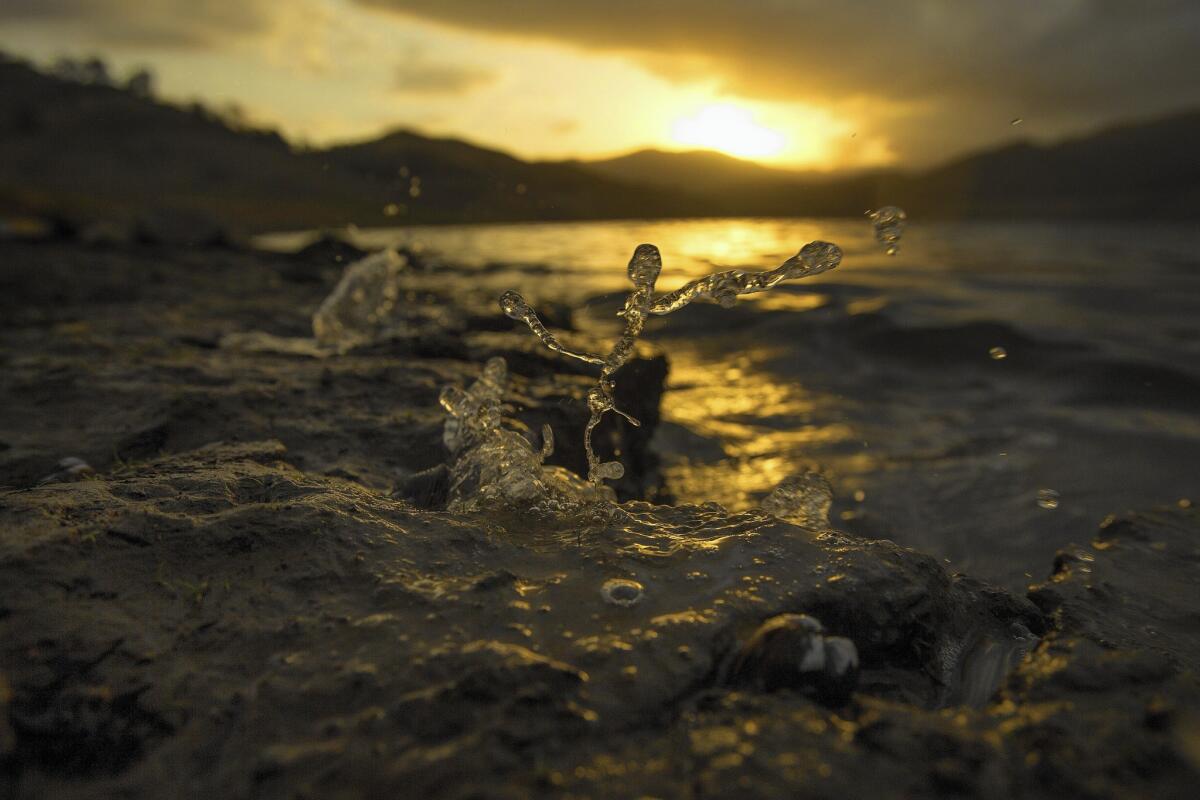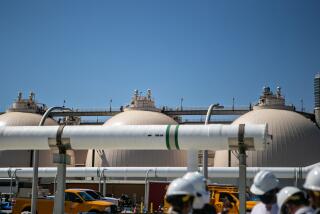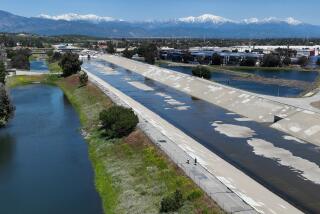California seeks to build one of world’s largest recycled water programs

The Metropolitan Water District of Southern California is in talks with Los Angeles County sanitation districts about developing what could be one of the largest recycled water programs in the world.
In a committee meeting Monday, the agency’s staff presented the framework of a plan to purify and reuse as much as 168,000 acre-feet of water a year – enough to serve about twice that number of households for a year.
Doing so would require MWD to build a treatment plant and delivery facilities and comply with various environmental regulations. Officials say similar projects have cost about $1 billion.
See the most-read stories this hour >>
It signals a desire by the region’s mammoth water importer to further develop local supplies.
“I’m not afraid of talking about another business model,” said Board Chairman Randy Record. “None of us should be.”
Currently, coastal communities in California flush hundreds of billions of gallons of treated sewage into the Pacific Ocean each year. In the last couple of decades, however, water managers have attempted to recycle some of this water for human use.
So-called purple pipe systems take sewage that has been filtered and cleansed and use it to irrigate crops, parks and golf courses. This water, however, is not used as drinking water.
Potable reuse systems, on the other hand, use a variety of methods to purify water that has already been processed at a sewage treatment facility. The end result of this “toilet to tap” process is a substance that is cleaner than most bottled waters, and is intended for human consumption.
Recycled potable water can either be added to municipal water systems directly or indirectly. In an indirect potable reuse system, such as the Orange County Groundwater Replenishment System, purified water is placed in an “environmental buffer,” such as an underground aquifer or surface water reservoir. After a period of storage, the water undergoes processing at a traditional drinking water treatment plant and enters the tap system.
As drought places increasing strain on traditional sources of drinking water, water managers have looked to expand water recycling systems and thereby increase local water supply.
In the city of Los Angeles, Mayor Eric Garcetti has directed the Department of Water and Power to reduce its purchase of imported potable water by 50% by 2024. He has also called for the creation of an “integrated water strategy that increases local water supplies and that improves water security.”
Officials in Orange County say their Groundwater Replenishment System -- which can treat up to 100 million gallons per day – will eventually be able to purify 130 million gallons a day for reuse. They say it is the largest such system in the world.
MWD officials hope that in about a decade, their treatment plant will produce 150 million gallons per day, eclipsing their neighbors to the south.
“Met has always been very supportive of water recycling,” said MWD Assistant General Manager Debra Man in an interview. “This takes it to the next level.”
MWD and a partnership of two dozen county wastewater purveyors – known as Sanitation Districts of Los Angeles County – have been working together on feasibility reports and pilot studies since 2010, according to informational documents on the recycling project. MWD officials said they want the board to authorize a memorandum of understanding between the two groups as early as November.
If the board gives its OK, the agencies could launch on a “demonstration project” at the sanitation districts’ Joint Water Pollution Control Plant in Carson in about 20 months. There, the treatment processes would be perfected on 1 million gallons of water per day while officials conduct additional studies and develop a financing plan, according to an MWD memo.
Man told board members the demonstration phase would cost about $15 million. In an interview, she said it was not clear where the funding would come from, though MWD officials have said it is possible that some of the costs may be covered by a water bond passed by voters last year.
Funding was just one of many concerns raised by MWD board members representing the San Diego County Water Authority. In a letter to the board, the San Diego representatives said MWD staff should identify a source of funding other than the existing rates.
“We request that a cost of service analysis be conducted to identify which agencies will benefit in order to determine how the costs of this project should be allocated,” the San Diego board members wrote.
They also said creating a new recycled water program was “premature” because local and regional water plans are still being updated, and those plans “will provide vital information regarding water supply and demand forecasts.”
In addition, they noted that “recycled water supply and reuse projects already exist throughout the MWD service area.”
“We do not understand -- and the Board Memo does not explain -- why MWD believes a new recycled water program is necessary,” the San Diego contingent wrote.
Experts have also raised concerns about what happens when waters of varying chemistries are mixed in aquifers.
A study published recently in the journal Environmental Science & Technology found that when highly purified wastewater was stored in an Orange County aquifer, the water caused arsenic to escape from clay sediments in a way that naturally infiltrating water did not.
The solution, according to Stanford University researchers, was to add calcium to the purified water before adding it to the aquifer.
The full MWD board is set to hear a presentation on the recycled water supply program at its Tuesday meeting.
For more drought news, follow @ByMattStevens and @montemorin.
ALSO:
L.A. lawmakers to declare ‘state of emergency’ on homelessness
Costco shopper, 78, punched in fight over free Nutella waffle sample
How the new King hospital hopes to put its ‘Killer King’ image ‘far behind’
More to Read
Start your day right
Sign up for Essential California for news, features and recommendations from the L.A. Times and beyond in your inbox six days a week.
You may occasionally receive promotional content from the Los Angeles Times.







